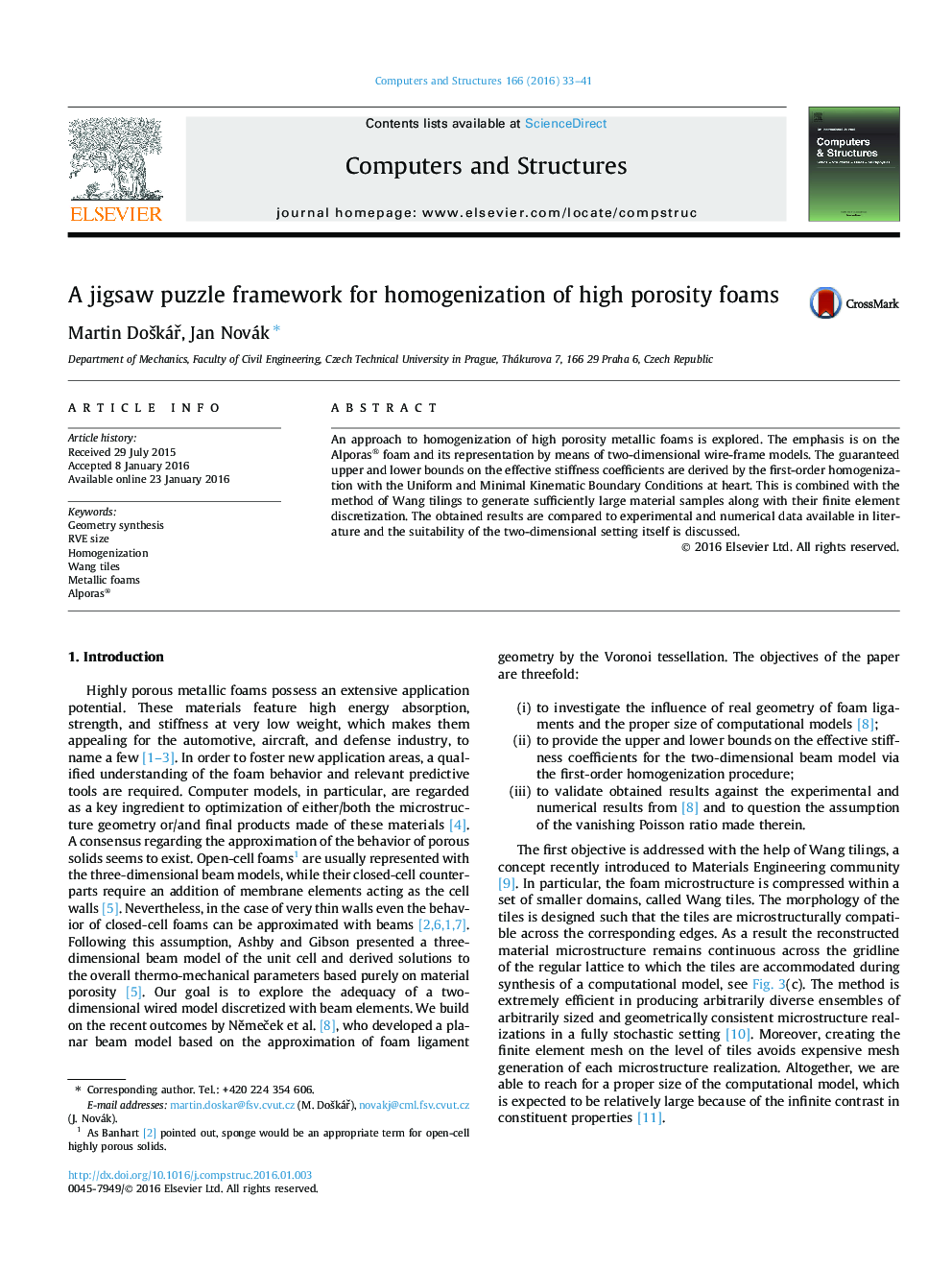| Article ID | Journal | Published Year | Pages | File Type |
|---|---|---|---|---|
| 509840 | Computers & Structures | 2016 | 9 Pages |
•The Wang tiling technique for generating large ensembles of arbitrarily sized RVEs.•First order homogenization via macroscopic degrees of freedom for wire-frame models.•The lower bound obtained by employing the minimal Kinematic Boundary Conditions.•A discussion on validity of two-dimensional models for foam materials.
An approach to homogenization of high porosity metallic foams is explored. The emphasis is on the Alporas® foam and its representation by means of two-dimensional wire-frame models. The guaranteed upper and lower bounds on the effective stiffness coefficients are derived by the first-order homogenization with the Uniform and Minimal Kinematic Boundary Conditions at heart. This is combined with the method of Wang tilings to generate sufficiently large material samples along with their finite element discretization. The obtained results are compared to experimental and numerical data available in literature and the suitability of the two-dimensional setting itself is discussed.
